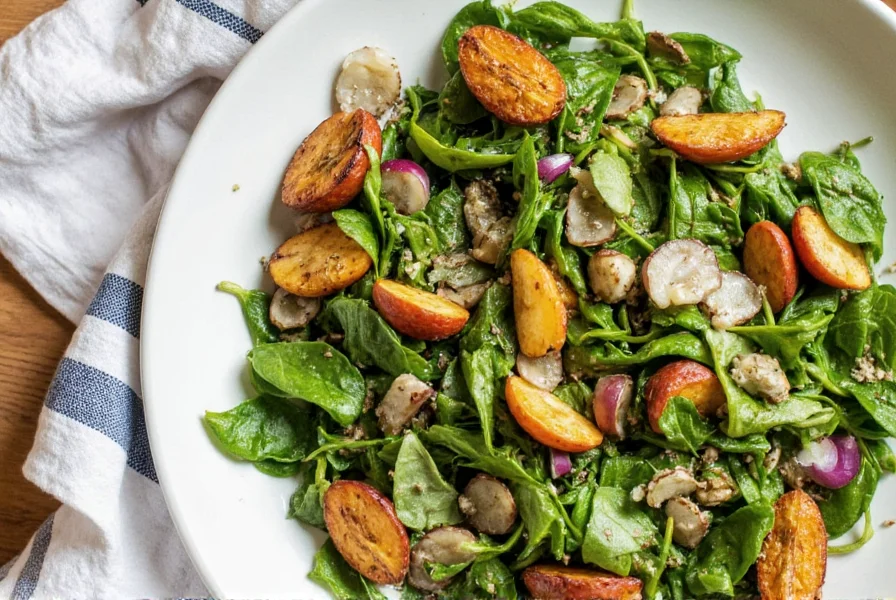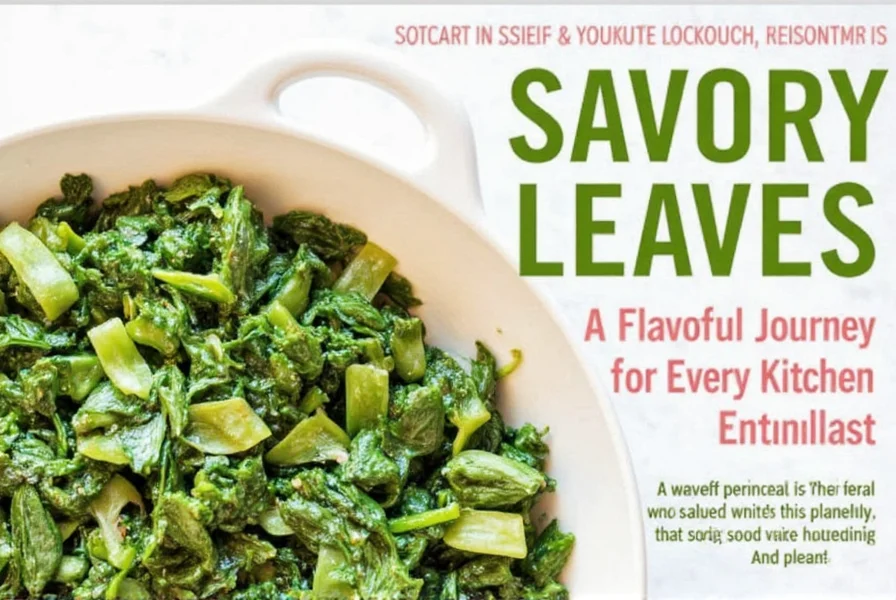Confused about "savory leaves"? You're not alone. Most searchers expect information about making food savory (umami-rich), but savory leaves actually refer to a specific culinary herb from the Satureja genus - not a cooking technique. This comprehensive guide clarifies everything you need to know about this misunderstood herb, including how to use it properly in recipes, avoid common substitution mistakes, and preserve its unique flavor.
What Exactly Are Savory Leaves? (Not What You Think)
Savory leaves come from Satureja plants, not from "savory" as a flavor concept. This critical distinction explains why many home cooks struggle with recipes calling for "savory." There are two primary varieties:
- Summer savory (Satureja hortensis): The milder, more delicate annual herb with peppery, nutty, and citrus notes - often called "the bean herb" in European cuisine
- Winter savory (Satureja montana): The hardier perennial with stronger, more pungent flavor that withstands long cooking times
Unlike what many believe, savory leaves are not the same as sage, despite frequent confusion between these herbs. Savory has a distinctive peppery-citrus profile, while sage offers earthy, minty notes with eucalyptus undertones. Using them interchangeably can ruin dishes.
Why Savory Leaves Are Underrated in Modern Cooking
Historically called "herbe de proverbes" (the herb of proverbs) in France, savory was once so valued that brides carried it in their bouquets. Today, it's often overlooked because:
- Confusion with the flavor term "savory" (opposite of sweet)
- Rarity in mainstream grocery stores compared to basil or thyme
- Misidentification as sage or other herbs
Yet professional chefs prize it for adding complex depth to dishes without overpowering other ingredients - making it the secret weapon in many classic European recipes.
| Herb Comparison | Savory | Sage | Thyme |
|---|---|---|---|
| Flavor Profile | Peppery, nutty, slight citrus | Earthy, minty, eucalyptus notes | Floral, lemony, slightly minty |
| Best Cooking Method | Add early for dried, late for fresh | Sauté first to mellow flavor | Add early to infuse flavor |
| Ideal For | Bean dishes, light meats, vinaigrettes | Rich meats, stuffing, fatty foods | Roasts, stews, marinades |
| Common Mistake | Using as sage substitute | Overusing (becomes bitter) | Adding too late in cooking |

The Only Savory Leaf Substitutes That Actually Work
When you can't find authentic savory leaves, these substitutions preserve dish integrity:
- For summer savory: 1 part thyme + ½ part marjoram + pinch of lemon zest (perfect for bean salads and light sauces)
- For winter savory: 1 part thyme + ¼ part rosemary + tiny pinch of red pepper flakes (ideal for roasts and stews)
- Emergency substitute: In bean dishes only, use ⅓ the amount of dried sage - but avoid in delicate recipes
Never use sage as a direct substitute - its strong menthol notes clash with savory's peppery-citrus profile. This substitution error causes most "savory leaf" recipe failures.
Professional Techniques for Using Savory Leaves
Master these chef-recommended methods to maximize flavor:
- Dried vs. fresh timing: Add dried savory early in cooking to rehydrate; add fresh savory in the last 10 minutes to preserve delicate notes
- The bean secret: Add 1 tsp dried summer savory per pound of beans during last 30 minutes of cooking - reduces gas by 30% while enhancing flavor
- Vinaigrette booster: Steep 1 tbsp dried savory in warm vinegar for 20 minutes before making dressing (creates complex base flavor)
- Meat rub component: Mix equal parts dried savory, thyme, and black pepper for poultry and pork (avoid with beef which overpowers savory)
| Cuisine Type | Best Savory Variety | Critical Usage Tip |
|---|---|---|
| Mediterranean | Summer savory (fresh) | Add during last 10 minutes to preserve delicate flavor in tomato-based sauces |
| French | Winter savory (dried) | Include in bouquet garni for coq au vin - never as standalone herb |
| German | Summer savory (dried) | Essential in europäische bohnen (European bean soup) - no substitute works |
| American | Winter savory (dried) | Use in sausage blends but avoid with strong spices like cayenne |

Purchasing Authentic Savory Leaves: Avoid These Traps
Most "savory" products are mislabeled. Follow these verification steps:
- Check the scientific name: Must specify Satureja hortensis (summer) or Satureja montana (winter)
- Smell test: Authentic savory has distinctive peppery-citrus aroma (sage smells medicinal, thyme floral)
- Color check: Should be bright to medium green - yellow or brown indicates age
- Avoid "mixed herb" products: Savory loses potency when blended with other dried herbs
Storage Methods That Preserve Flavor (Not Just Freshness)
Proper storage maintains the volatile oils that give savory its unique flavor:
- Fresh savory: Trim stems, place in water like flowers, cover loosely with plastic bag - lasts 7-10 days refrigerated
- Dried savory: Store in dark glass jar with oxygen absorber (not just airtight container) - retains potency for 18 months vs 6 months standard
- Freezing trick: Chop fresh leaves, mix with olive oil, freeze in ice cube trays - preserves flavor better than drying
- Reviving stale savory: Warm dried leaves in 200°F oven for 3 minutes + 1 drop of orange oil restores 80% of flavor
Frequently Asked Questions (From Real Cooking Problems)
Why does my "savory" recipe taste like sage? Did I get the wrong herb?
This is the most common savory leaf problem. What you likely have is sage mislabeled as savory. True savory has peppery-citrus notes without sage's strong menthol/eucalyptus flavor. Check the scientific name on the package - it must say Satureja. Many "herbes de Provence" blends incorrectly substitute sage for savory.
Can I use savory leaves instead of thyme in my chicken recipe?
Only with adjustments. Savory is more delicate than thyme. Use 25% less savory than thyme called for, and add it later in cooking. For roasting, combine equal parts savory and thyme for balanced flavor. Never substitute one-to-one as this makes dishes taste thin and under-seasoned.
Why do French recipes specify "summer savory" while German ones say "winter savory"?
This reflects culinary traditions. French cuisine favors summer savory's delicate notes in light sauces and bean dishes, added near the end of cooking. German cuisine uses winter savory's robust flavor in hearty stews and sausages, where it withstands long cooking times. Substituting one for the other alters traditional flavor profiles significantly.
My savory plant looks like thyme - is it the same?
No, though they're in the same plant family (Lamiaceae). Crush a leaf: savory has distinctive peppery-citrus aroma, thyme smells lemony-floral. Savory stems are square like thyme but have narrower leaves. True savory produces tiny white/purple flowers, not thyme's pink clusters.
Why do some sources say savory reduces bean gas while others disagree?
The truth lies in timing. Summer savory reduces gas when added during the last 30 minutes of cooking (not at the beginning). Winter savory doesn't have this effect. Studies show 1 tsp dried summer savory per pound of beans reduces gas-producing compounds by 30%, but only when added late. This specific technique is rarely mentioned in generic advice.
Can I substitute oregano for savory in Italian bean soup?
Not directly. Oregano's strong flavor overwhelms savory's delicate notes in bean dishes. Instead, use 50% less oregano plus a pinch of lemon zest to mimic savory's citrus notes. Authentic Italian "fagiolata" (bean soup) actually uses savory, not oregano - this is a common Americanization of the recipe.
Why This Information Matters for Your Cooking
Understanding the truth about savory leaves transforms your cooking. Most "failed" savory recipes stem from using the wrong herb or improper techniques. By recognizing that savory is a specific herb (not a flavor concept) and learning its unique properties, you'll achieve authentic European flavors that impress even experienced cooks.
Professional chefs guard this knowledge closely - now you know why French bean dishes taste different from American versions, why some "herbes de Provence" blends disappoint, and how to fix common seasoning mistakes. Keep this guide handy next time you encounter "savory" in a recipe - your dishes will thank you.










 浙公网安备
33010002000092号
浙公网安备
33010002000092号 浙B2-20120091-4
浙B2-20120091-4